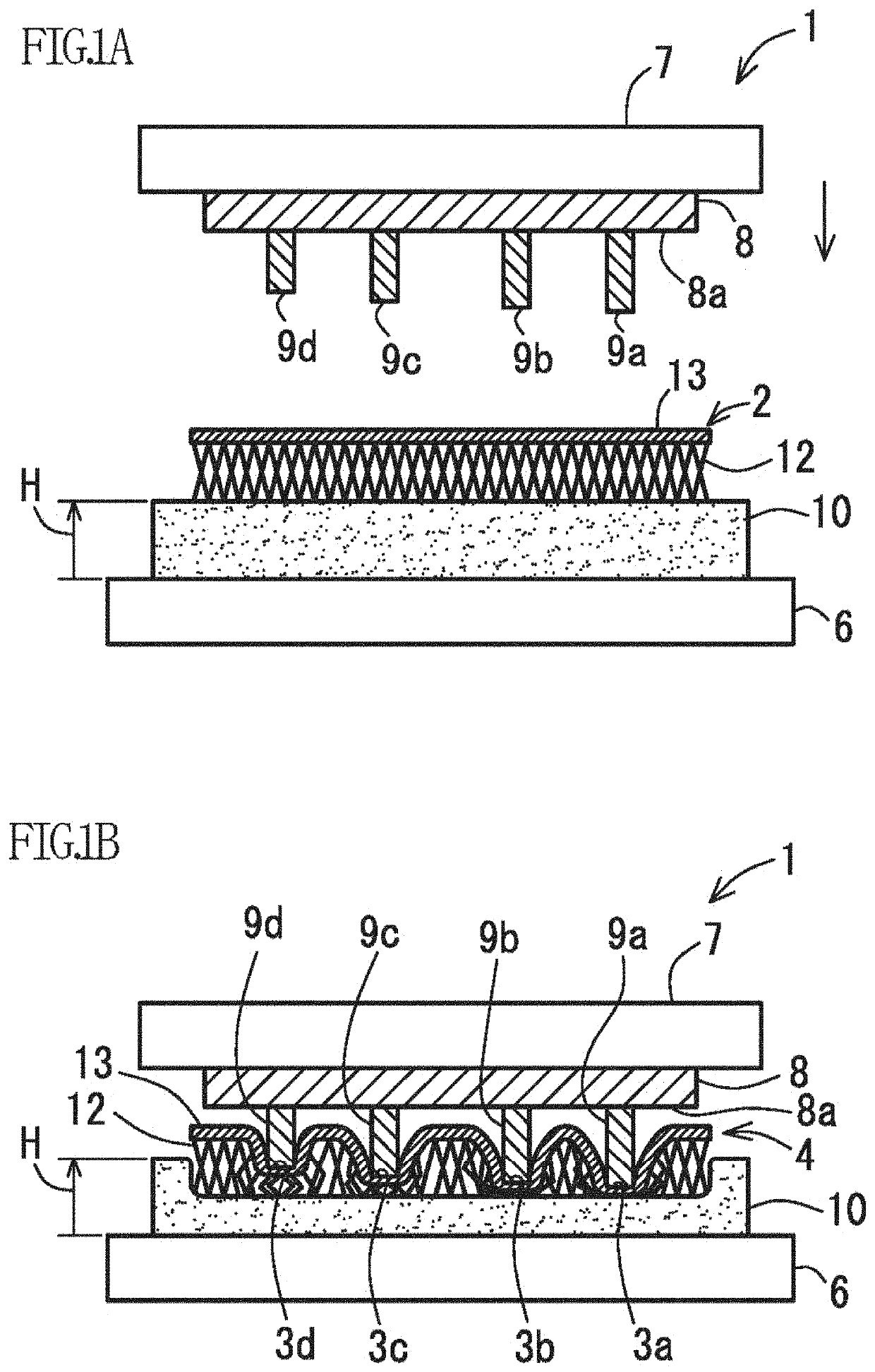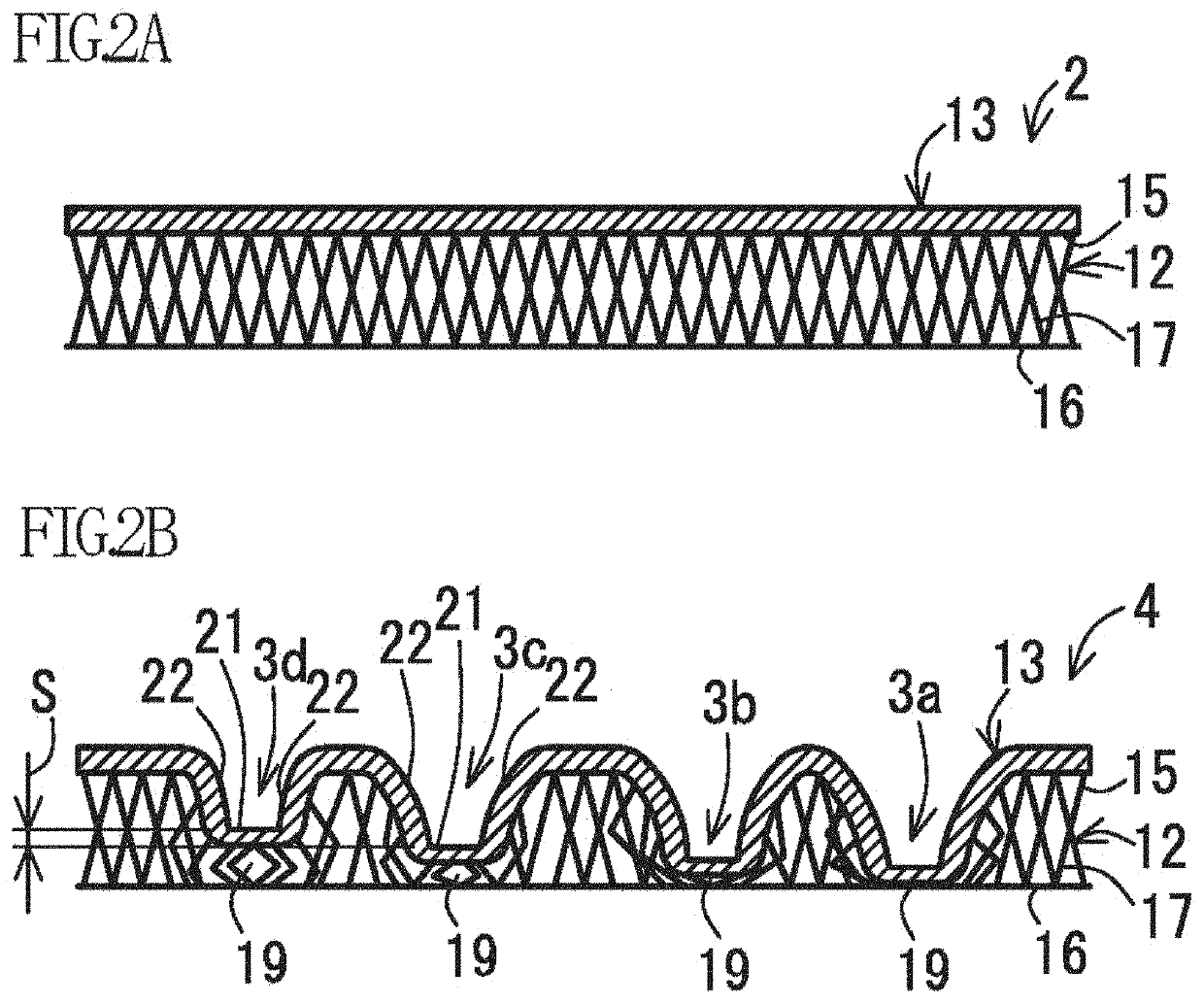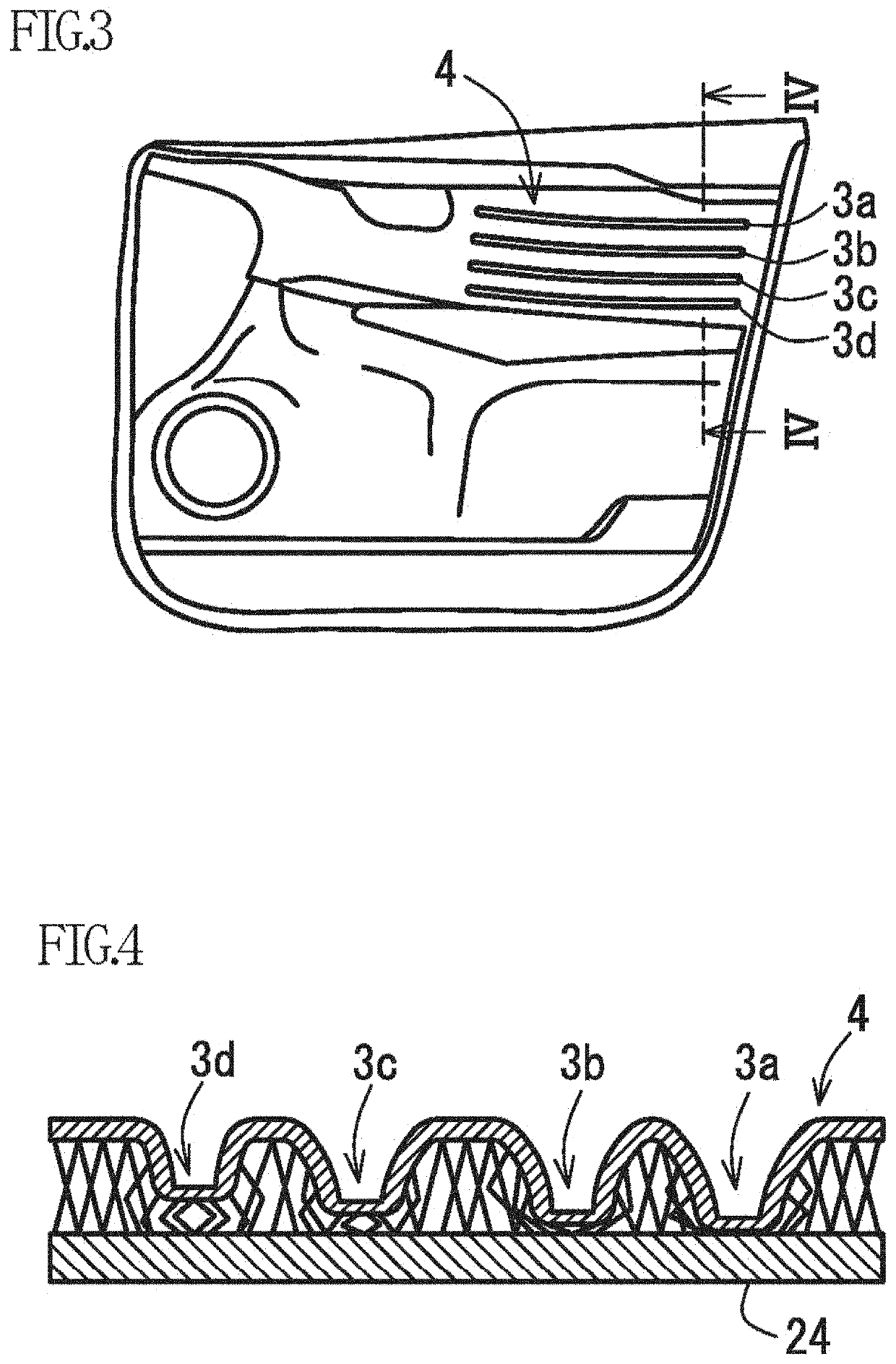Method for producing skin material
a skin material and method technology, applied in the direction of transportation and packaging, other domestic articles, vehicle components, etc., can solve the problems of many work processes, hardly receiving appropriate pressing force, and inability to form clearly, so as to suppress the surface heat deterioration of the skin material, improve the aesthetic appearance, and improve the impact resilience and heat resistance
- Summary
- Abstract
- Description
- Claims
- Application Information
AI Technical Summary
Benefits of technology
Problems solved by technology
Method used
Image
Examples
example 1
(1) Method for Producing Skin Material
[0048]In a method for producing a skin material according to the present Example, as shown in FIGS. 1A and 1B, a raw material 2 is heat-pressed by an embossing machine 1 to obtain a skin material 4 having a plurality of (four in FIGS. 1A and 1B) concave parts 3a to 3d for intensity display formed (i.e., shaped) on the front surface side and a flat back surface.
[0049]The embossing machine 1 includes a lower metal pedestal 6 (also referred to as a “surface plate”) and an upper metal pedestal 7 (also referred to as “upper die”) which can be moved closer to or away from the pedestal 6. Each of these pedestals 6, 7 can be heated by a heating means (not shown). Further, an embossing die 8 is provided on the bottom of the pedestal 7. On a surface 8a of the embossing die 8, a plurality of (four in FIGS. 1A and 1B) pressing ribs 9a to 9d having different protrusion heights are protruded. Each of the pressing ribs 9a to 9d is formed in a long plate shape ...
example 2
[0063]Next, a method for producing a skin material according to Example 2 will be described. The same components as in the method for producing a skin material according to Example 1 are denoted by the same reference signs and detailed description thereof is omitted. The embossing die or the like, as a difference between the Examples, will be described in detail.
(1) Method for Producing Skin Material
[0064]In a method for producing a skin material according to the present embodiment, as shown in FIGS. 5A and 5B, a raw material is heat-pressed by an embossing machine 31 to obtain a skin material 4 having a concave part 33 for gradation display formed (i.e., shaped) on the front surface side and a flat back surface.
[0065]An embossing die 38 is provided on the bottom of the pedestal 7 of the embossing machine 31. On the surface 38a of the embossing die 38, a pressing rib 39 having a protrusion end face 39a whose protrusion height gradually changes is protruded.
[0066]In the method for pr...
PUM
| Property | Measurement | Unit |
|---|---|---|
| depth | aaaaa | aaaaa |
| depth | aaaaa | aaaaa |
| thickness | aaaaa | aaaaa |
Abstract
Description
Claims
Application Information
 Login to View More
Login to View More - R&D
- Intellectual Property
- Life Sciences
- Materials
- Tech Scout
- Unparalleled Data Quality
- Higher Quality Content
- 60% Fewer Hallucinations
Browse by: Latest US Patents, China's latest patents, Technical Efficacy Thesaurus, Application Domain, Technology Topic, Popular Technical Reports.
© 2025 PatSnap. All rights reserved.Legal|Privacy policy|Modern Slavery Act Transparency Statement|Sitemap|About US| Contact US: help@patsnap.com



